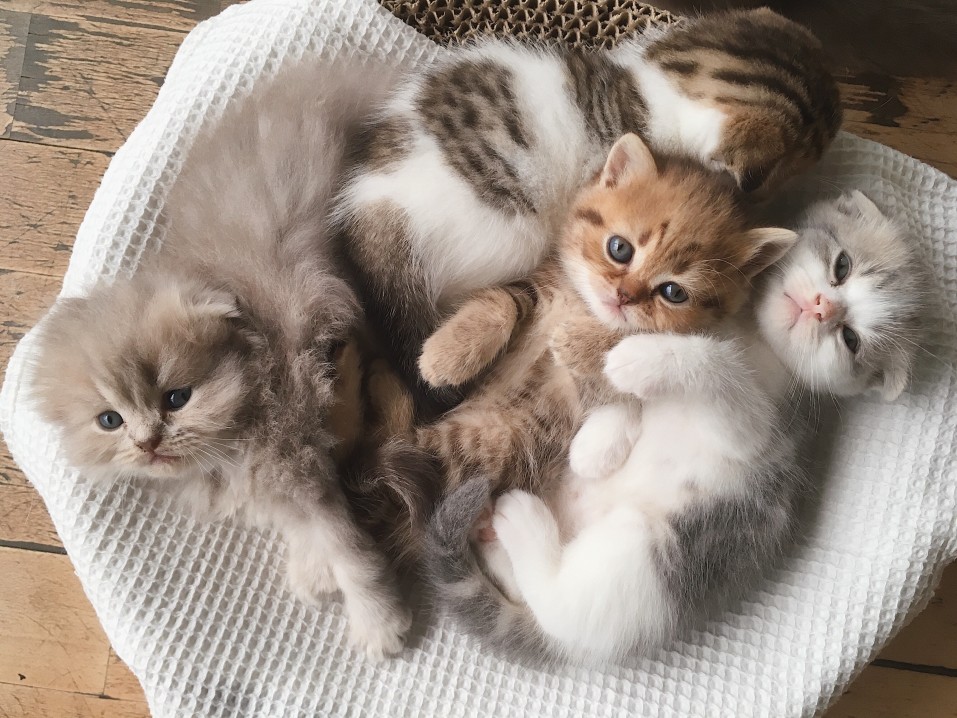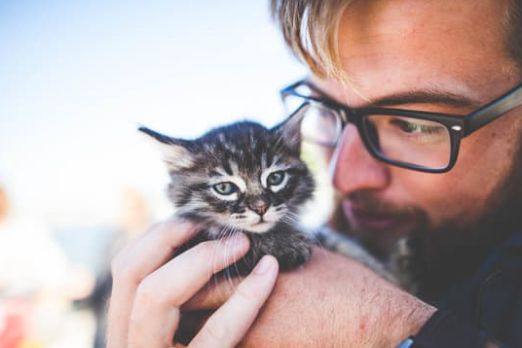Why cats claw: understanding their natural instinct
Why do cats claw? If you share your life with a feline, you’ve probably already observed this typically cat-like behavior, sometimes adorable, sometimes destructive. But there are fascinating and often little-known reasons behind these claws!
- Why cats claw: understanding their natural instinct
- Marking their territory: an essential need for cats
- Taking care of their claws: an essential beauty routine
- Relieving stress and anxiety: a soothing gesture
- 5 surprising reasons why your cat claws
- Expressing joy and excitement
- Grabbing your attention: a subtle appeal
- Stretch and relax their muscles after a nap
- How to protect your furniture while respecting your cat’s needs
- Choosing the right scratching post to satisfy your instincts
- Gentle techniques to keep your cat off the furniture
- Positively reinforcing good behavior
- When excessive scratching becomes a problem: what to do?
- Identifying signs of abnormal behavior
- Understanding the root causes of excessive scratching
- Practical solutions to restore balance
- Conclusion: understanding scratching to strengthen your bond with your cat
- FAQ: 4 frequently asked questions about cat scratching
Marking their territory: an essential need for cats
Your cat doesn’t scratch your sofa on a whim, I promise! In fact, he releases pheromones from his paw pads to signal his presence to other felines. It’s as if he were saying: “Hello, this is my home!
Visible scratching also acts as a visual warning, clearly indicating to other cats that the territory is already occupied. A secure territory is essential to your little companion’s well-being, helping him to feel confident and at ease.
Taking care of their claws: an essential beauty routine
Yes, your cat’s claws need regular maintenance! By scratching, your cat eliminates dead layers from its claws, promoting their natural renewal. A bit like us with our nail file, after all.
Sharp claws are essential for efficient climbing, hunting and playing. What’s more, they prevent painful injuries caused by claws that are too long or brittle. Think of it as an essential feline manicure!
Relieving stress and anxiety: a soothing gesture
Scratching is also a great way for your cat to release built-up tension. After a stressful day (yes, even cats have their little worries!), scratching provides real relief.
However, be sure to provide a suitable scratching post to channel this behavior. If you notice that your cat is scratching compulsively or unusually, this may be a sign of anxiety or stress.
5 surprising reasons why your cat claws
Expressing joy and excitement
Have you ever seen your cat rush to his scratching post after an intense play session or after receiving a treat? It’s simply his way of expressing his happiness and excitement!
Recognizing these joyful scratches is essential to positively encouraging this natural behavior. Praise him with petting or a small reward to reinforce this healthy habit.
Grabbing your attention: a subtle appeal
Does your cat suddenly scratch the armchair when you’re otherwise occupied? Perhaps it’s his subtle way of demanding your attention.
Try to identify these situations and respond to his emotional needs with positive interaction. A little cuddle or play can be enough to satisfy him and preserve your furniture!
Stretch and relax their muscles after a nap
An unusual fact: did you know that scratching allows your cat to stretch completely after a nap? This gesture allows him to stretch out all his muscles, from his front paws to the tip of his tail.
Set up a comfortable space near his sleeping area with a suitable scratching post, where he’ll love to stretch out and relax after his long daily naps. By the way, find out why your cat sleeps so much in our dedicated article!
How to protect your furniture while respecting your cat’s needs
Choosing the right scratching post to satisfy your instincts
Choosing the right scratching post is crucial to preserving your furniture. Choose a stable model, high enough to allow your cat to stretch out completely, and with a texture adapted to his preferences (cardboard, sisal, wood…).
Place it in a strategic, visible and easily accessible location. A common mistake to avoid is hiding the scratching post in an isolated corner. Your cat will always prefer to scratch where it is most often seen!
Gentle techniques to keep your cat off the furniture
Here’s an original and effective tip: temporarily cover your favorite furniture with transparent plastic film or aluminum foil. Cats hate the feeling under their paws and will naturally be deterred from scratching these surfaces.
You can also use mild citrus-based repellents that are harmless to your pet. With patience and regularity, your cat will soon understand where he’s allowed to claw.
Positively reinforcing good behavior
Systematically reward your cat when it uses its scratching post correctly. A small treat, a caress or a gentle word are enough to create a positive routine.
However, never punish or scold your cat for clawing in the wrong place, as this can increase stress and reinforce unwanted behavior.
When excessive scratching becomes a problem: what to do?
Identifying signs of abnormal behavior
Is your cat suddenly scratching much more often than usual? Watch out for these sudden changes, especially if they’re accompanied by other unusual symptoms such as agitation or apathy.
Understanding the root causes of excessive scratching
A move, the arrival of a new pet or a major change in your cat’s environment can cause intense stress, leading to compulsive scratching. Sometimes, medical problems such as joint pain may also be to blame. In such cases, a veterinary consultation is essential to rule out any pathology.
Practical solutions to restore balance
Adapt your cat’s environment to reduce stress: create safe, comfortable spaces, provide plenty of high vantage points and regular opportunities for play and interaction.
If, despite your best efforts, the problem persists, don’t hesitate to seek the help of a professional feline behaviorist, who will be able to guide you effectively.
Conclusion: understanding scratching to strengthen your bond with your cat
By better understanding why cats claw, you can not only protect your home, but also strengthen your relationship with your cat. Feel free to explore our Pawtounes.fr blog further to discover more valuable and fun tips for living in harmony with your favorite feline companion!
FAQ: 4 frequently asked questions about cat scratching
- Why does my cat prefer to scratch my sofa rather than his scratching post?
He’s probably trying to mark his territory in a strategic place or appreciates the texture of your sofa more. - How do I teach my kitten to use her scratching post properly?
Encourage him with positive rewards and place the scratching post in a conspicuous place. - What type of scratching post is best for my cat?
Choose a stable, high model with a texture your cat likes (sisal, cardboard). - Are claw guards a good solution for preventing damage?
They can be useful temporarily, but are no substitute for positive training with a suitable scratching post.







